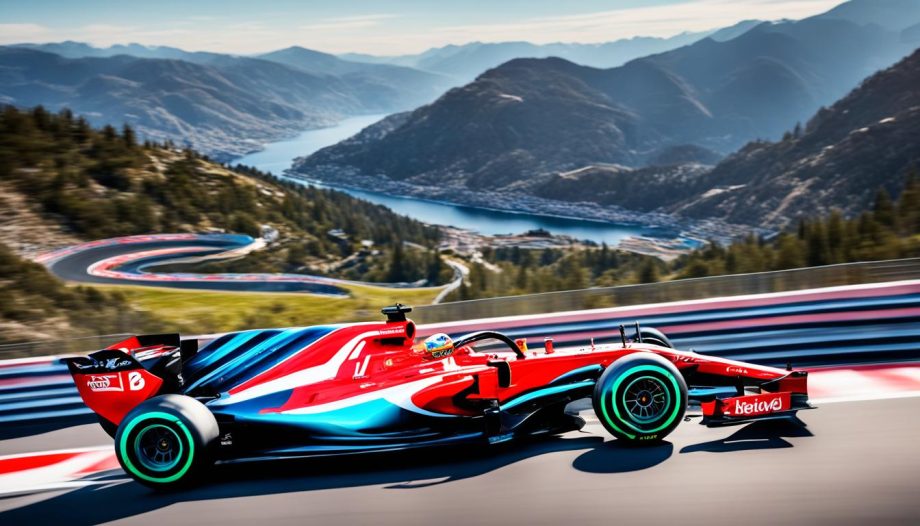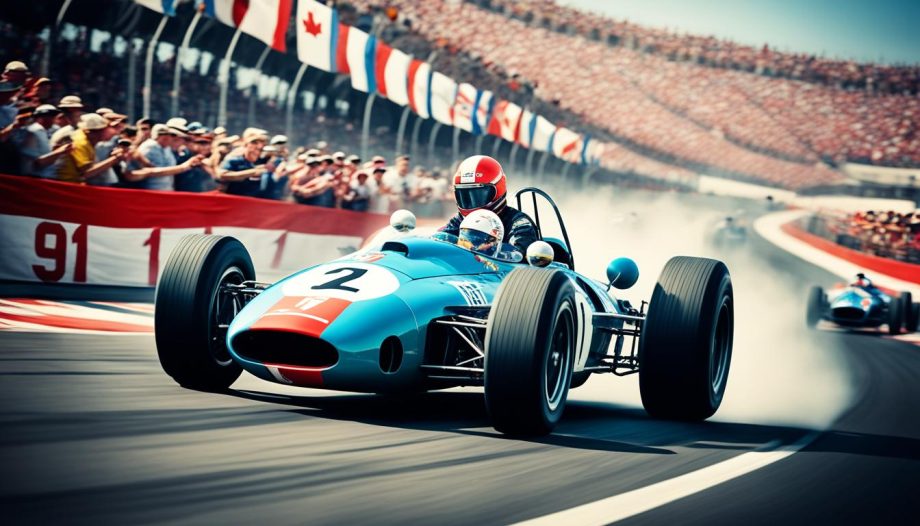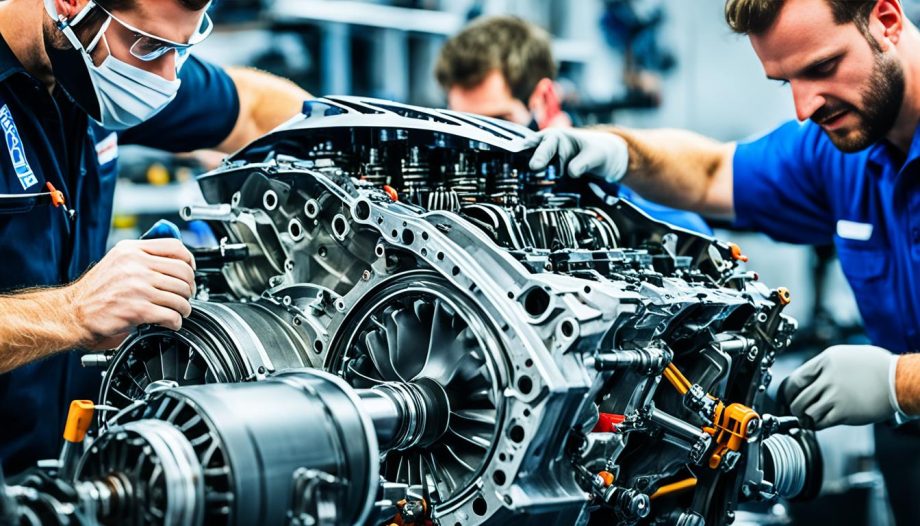Welcome to the thrilling world of F1 Motorsport, where speed, skill, and cutting-edge technology collide to create the ultimate racing experience. In this article, we will delve into the reasons why Formula 1 is widely regarded as the pinnacle of motorsport.
From the moment the lights go out, F1 Motorsport captivates fans around the globe with its heart-stopping action and unparalleled excitement. But what sets this racing series apart from the rest?
Firstly, it’s the technological marvels that make F1 Motorsport truly exceptional. Formula 1 teams invest heavily in research and development to push the boundaries of automotive engineering. From aerodynamic advancements that enhance performance to the innovative hybrid powertrains that improve fuel efficiency, the technological innovations in F1 Motorsport are nothing short of remarkable.
However, it’s not just about the cutting-edge technology. The thrill of speed is another factor that distinguishes F1 Motorsport from other racing disciplines. With acceleration that can rival a fighter jet, drivers experience gravitational forces that push the limits of human endurance. Hairpin turns and lightning-fast straightaways provide an adrenaline rush unlike any other.
But it’s not all about sheer speed. F1 Motorsport demands immense skill and strategy from its drivers. Split-second decision-making, precise maneuver execution, and the ability to navigate complex racing circuits require a level of expertise that only a select few possess. Behind the scenes, teams strategize meticulously, making pit stops and tire choices to optimize performance and gain a competitive edge.
Furthermore, F1 Motorsport has become a global phenomenon. With a passionate fan base spanning continents, Formula 1 races attract millions of television viewers worldwide. Hosting a Formula 1 event is not only a mark of prestige for a country but also an opportunity to showcase its culture and economic impact.
In conclusion, F1 Motorsport embodies the pinnacle of motorsport. It combines state-of-the-art technology, mind-boggling speed, exceptional skill, and global reach. So buckle up as we take you on a thrilling journey through the world of Formula 1.
The Technological Marvels of F1 Motorsport
When it comes to pushing the boundaries of engineering excellence, nothing quite compares to F1 Motorsport. The sport has become synonymous with groundbreaking technological advancements that have revolutionized the automotive industry. From aerodynamic innovations to state-of-the-art hybrid powertrains, Formula 1 teams are at the forefront of technological marvels that have forever changed the way we perceive speed and performance.
One of the key areas where F1 Motorsport has driven technological advancements is in aerodynamics. The sleek and aerodynamic designs of the cars allow them to cut through the air with minimal resistance, maximizing speed and enhancing overall performance. Teams invest heavily in wind tunnel testing and computational fluid dynamics to optimize the shape of their cars, ensuring every curve and contour is designed for maximum efficiency.
Furthermore, the introduction of hybrid powertrains in Formula 1 has propelled the sport into the future of automotive technology. F1 cars now combine a highly efficient turbocharged engine with powerful electric motor systems, harvesting energy from braking and deploying it during acceleration. These advanced power units deliver both impressive performance on the track and increased fuel efficiency, contributing to a more sustainable approach to motorsport.
In addition to aerodynamics and hybrid powertrains, F1 Motorsport has also seen significant advancements in areas such as data analytics, materials science, and tire technology. Teams utilize extensive data analysis to track and optimize every aspect of their performance, from fuel consumption to tire wear. This allows them to make data-driven decisions that maximize their chances of success on race day.
In conclusion, F1 Motorsport stands as a true testament to the ingenuity and innovation of the automotive industry. The technological marvels that have emerged from this sport have not only revolutionized racing but have also influenced the development of road cars and shaped the future of transportation. As Formula 1 continues to push the boundaries of what’s possible, the world eagerly awaits the next wave of technological advancements that will further elevate the sport to new heights.
The Thrill of Speed in F1 Motorsport
One of the defining characteristics of F1 Motorsport is the blistering speed at which these cars tear around the racetrack, pushing the limits of what is humanly and mechanically possible. The speeds achieved in Formula 1 are nothing short of mind-boggling, leaving spectators in awe and drivers on the edge of their seats.
Acceleration is a key component of the exhilarating speed in F1 Motorsport. These cars can go from 0 to 60 mph in just a matter of seconds, showcasing the raw power and torque that propels them forward. The V6 turbocharged engines combined with electric hybrid systems deliver an incredible burst of energy, propelling the cars to unimaginable velocities.
As the cars race around the track, drivers navigate through hairpin turns with unparalleled precision, showcasing their immense skill and concentration. The g-forces experienced during these maneuvers are immense, as drivers endure intense lateral acceleration while maintaining control of their machines.
The straightaways in Formula 1 racing provide a chance for the cars to unleash their true speed potential. With engines producing over 1,000 horsepower, these machines can reach speeds of over 200 mph, making them some of the fastest vehicles on the planet. The sheer velocity with which they hurtle down the straightaways is awe-inspiring, creating a thrilling spectacle for fans watching from the grandstands or the comfort of their homes.
“Formula 1 is the epitome of speed and excitement. It’s a relentless pursuit of pushing the limits and achieving the highest speeds possible. Every race is a heart-pounding experience that keeps fans yearning for more.” – Lewis Hamilton, F1 World Champion
The speed factor in F1 Motorsport not only adds to the excitement of the sport but also tests the mettle of the drivers. It requires split-second decision-making, lightning-fast reflexes, and unwavering focus to navigate through the twists and turns at breakneck speeds. The drivers must have an intimate understanding of their cars and the laws of physics to harness the incredible speed and use it to their advantage.

The relentless pursuit of speed is what makes F1 Motorsport so captivating. It pushes the boundaries of what is possible, both in terms of engineering excellence and human performance. The combination of mind-bending acceleration, hair-raising turns, and mind-blowing straightaways makes Formula 1 racing a truly unparalleled experience for drivers and fans alike.
The Skill and Strategy of F1 Motorsport
When it comes to F1 Motorsport, skill and strategy go hand in hand. Competing at the highest level of motorsport requires a unique set of abilities that combine split-second decision-making with precise execution. From the moment the lights go out, drivers must navigate through the intense pressures of the race while constantly adapting to dynamic conditions on the track.
One of the key aspects of skill in F1 Motorsport is the ability to extract maximum performance from the car. Each driver must possess exceptional control and finesse to handle the immense power and speed of these racing machines. Gaining an edge over the competition requires an intimate understanding of the car’s capabilities and a keen sense of timing to execute overtakes and defensive maneuvers.
But skill alone is not enough to succeed in F1. Strategy plays a crucial role in determining the outcome of races. Teams analyze various factors, such as tire management, fuel consumption, and pit stop timings to optimize their race strategy. Strategic decisions can make or break a driver’s chances of victory, as choosing the right time to pit for fresh tires or deploying clever tactics to gain track position can be the difference between winning and losing.
The Role of Team Communication and Coordination
In addition to individual skill and strategy, effective team communication and coordination are fundamental to success in F1 Motorsport. Engineers, strategists, and mechanics work together to gather and interpret data, develop race strategies, and make real-time decisions that can have a significant impact on the outcome of a race.
Team radios allow for seamless communication between the driver and the crew, enabling crucial information to be relayed instantly. This communication ensures that drivers are aware of changing track conditions, potential hazards, and strategic decisions that the team wants to implement. Collaborative efforts foster fluid coordination, enhancing a team’s ability to react swiftly and effectively to unforeseen circumstances during a race.
The Mental and Physical Demands
Succeeding in F1 Motorsport requires exceptional mental and physical conditioning. Drivers must be able to maintain focus and concentration for the duration of a race, making split-second decisions while enduring high-speed forces and extreme ambient temperatures. Mental resilience is crucial for navigating tense on-track battles, overcoming setbacks, and performing under intense pressure.
Moreover, physical fitness plays a vital role in the performance of drivers. The G-forces experienced during cornering, acceleration, and braking can be immense, putting significant strain on the body. Drivers undergo rigorous training regimes to build strength, endurance, and agility, ensuring they can withstand these physical demands throughout the race.
In conclusion, F1 Motorsport is a captivating spectacle that showcases the exceptional skill and strategic thinking required to compete at the highest level. The combination of split-second decision-making, precise execution, effective team coordination, and mental and physical prowess make F1 Motorsport a true test of human capabilities. From the driver behind the wheel to the engineers in the garage, every aspect of skill and strategy comes together to create the thrilling and dynamic world of Formula 1.
The Global Phenomenon of F1 Motorsport
F1 Motorsport has truly become a global phenomenon, capturing the hearts and imaginations of fans around the world. The passionate fanbase of Formula 1 spans across continents, uniting people from diverse cultures and backgrounds under the thrilling spectacle of high-speed racing.
With its massive worldwide television viewership, F1 Motorsport has a truly global reach, enchanting millions with its adrenaline-fueled action and fierce competition. Whether it’s the iconic circuits in Monaco, Silverstone, or Suzuka, or the newer additions like Abu Dhabi and Austin, Formula 1 races attract enthusiasts from every corner of the globe.
Hosting Formula 1 races also holds immense economic significance for countries and cities. These events stimulate local economies, generating tourism revenue and creating job opportunities. The influx of international visitors not only boosts the hospitality sector but also highlights the host cities’ vibrant culture and infrastructure.
Moreover, F1 Motorsport serves as a powerful platform for innovation and sustainable practices in the automotive industry. The relentless pursuit of performance in Formula 1 has led to significant advancements in aerodynamics, engine efficiency, and alternative fuel technologies. This focus on sustainability and efficiency extends beyond the track, inspiring automakers worldwide to develop more eco-friendly vehicles.




